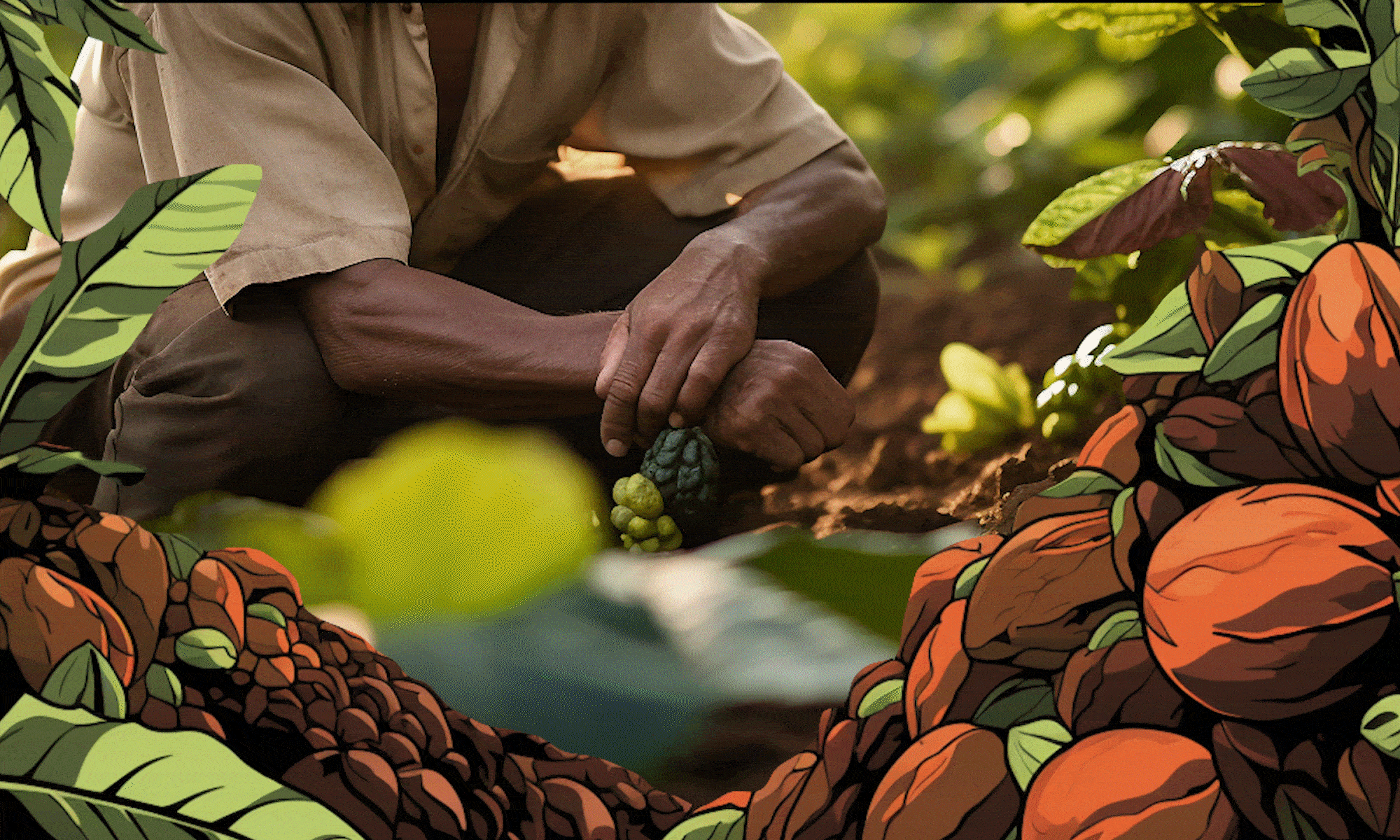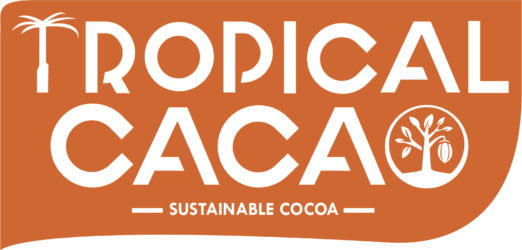🌴🍫
*Discover the hidden magic behind the world’s most exquisite chocolate and why its tropical origins make all the difference*
## Introduction: The Tropical Difference 🌞
When you bite into a piece of truly exceptional chocolate, that moment of pure bliss isn’t just in your imagination. There’s actual science—and centuries of wisdom—behind why chocolate sourced from tropical regions delivers a flavor experience that simply can’t be replicated elsewhere.
As global interest in artisanal, single-origin chocolate continues to grow, discerning chocolate lovers are increasingly asking: **why does tropical cacao taste so much better?** The answer stays in a fascinating combination of geography, biodiversity, traditional farming practices, and the unique cultural heritage of tropical cacao-growing regions.
In this comprehensive guide, we’ll journey deep into the lush rainforests where the world’s finest cacao is grown and uncover the secrets that make tropical chocolate a truly transcendent experience.
## The Perfect Growing Environment: Nature’s Chocolate Laboratory 🌡️
### The Cacao Belt: Where Magic Happens
The cacao tree (*Theobroma cacao*—literally “food of the gods”) thrives within approximately 20 degrees north and south of the equator. This narrow band around Earth’s middle—often called the “Cacao Belt”—provides the precise conditions these sensitive trees need:
– **Consistent Temperatures**: Cacao trees require stable temperatures between 65-90°F (18-32°C) year-round.
– **High Humidity**: 80-100% humidity creates the optimal environment for cacao development.
– **Rainfall Patterns**: Regular rainfall of 1,500-2,000mm annually, ideally distributed throughout the year.
– **Dappled Sunlight**: Cacao evolved as an understory tree, requiring filtered light rather than direct sun.
The tropical environment isn’t just good for cacao—it’s essential. These trees evolved specifically in these conditions over thousands of years, and their genetics are literally programmed for tropical life.
### The Science of Terroir: How Geography Influences Flavor
Just as wine connoisseurs speak of “terroir”—the complete natural environment where a particular wine is produced—cacao experts recognize that tropical growing conditions create distinctive flavor profiles impossible to replicate elsewhere:
1. **Soil Composition**: Volcanic soils in regions like Ecuador impart mineral notes, while the limestone-rich soils of the Dominican Republic contribute to fruitier flavors.
2. **Microclimate Variations**: Even within the tropics, subtle differences in elevation, proximity to water bodies, and seasonal patterns create unique flavor signatures.
3. **Slow Growth Advantage**: The measured pace of growth in tropical shade-grown cacao allows for more complex flavor compound development—similar to how slow-ripened fruits develop deeper flavors.
📊 **Flavor Development Timeline**:
– Day 0-90: Flower pollination and pod formation
– Day 90-140: Development of basic sugars and acids
– Day 140-180: Formation of complex flavor precursors
– Day 180-240: Final ripening and peak flavor potential
## Biodiversity Impact: Nature’s Flavor Enhancement System 🦋
### The Rainforest Symphony
Unlike industrial monoculture farming, traditional tropical cacao grows within diverse ecosystems that contribute significantly to chocolate’s complex flavor profile:
#### The Pollinators
Tiny midges (Forcipomyia spp.) are the primary pollinators of cacao flowers. These specialized insects require the humid, sheltered environment of diverse rainforests to survive. Without them, cacao pollination rates drop dramatically, affecting both yield and quality.
#### Companion Plants
Traditional cacao farms incorporate:
– **Shade Trees**: Tall tropical hardwoods that filter sunlight
– **Intermediate Canopy**: Fruit trees like banana, plantain and mango
– **Ground Cover**: Smaller plants that regulate soil moisture and temperature
These companion plants don’t just provide physical benefits—they create a complex web of biochemical interactions that influence cacao flavor development.
### Microbiome Magic
Perhaps the most fascinating aspect of tropical cacao’s superior taste comes from the microscopic level:
The indigenous microorganisms present in tropical forest ecosystems—bacteria, yeasts, and fungi—play crucial roles in fermentation that we’re only beginning to fully understand.
Research has shown that each tropical growing region has its own unique microbial “signature” that contributes to the distinctive flavor profiles of cacao from different origins:
– **West African Cacao**: Often features earthy, robust flavors
– **Central American Cacao**: Typically develops fruity, bright notes
– **South American Cacao**: Frequently displays floral, complex profiles
These regional differences stem partly from the native microorganisms that naturally occur on cacao beans and participate in the crucial fermentation process.
## Traditional Harvesting Methods: The Human Touch 👨🌾
### Wisdom Passed Through Generations
In tropical cacao-growing communities, harvesting knowledge has been refined over generations, resulting in practices that maximize flavor potential:
#### Perfect Timing
Expert farmers recognize the subtle signs of perfect ripeness that machines cannot detect:
– **Visual Cues**: The precise color change unique to each cacao variety
– **Sound Test**: The distinctive hollow sound when a perfectly ripe pod is tapped
– **Stem Resistance**: The slight give when a pod is gently twisted
#### Hand Selection
Unlike mechanized harvesting, traditional methods involve careful selection decisions for each individual pod:
1. **Selective Cutting**: Only perfectly ripe pods are harvested
2. **Careful Handling**: Pods are removed without damaging the cushion where future flowers will grow
3. **Immediate Assessment**: Experienced farmers crack open sample pods to check bean quality
### The Harvest Calendar
Traditional tropical cacao farmers work with natural rhythms rather than against them:
🗓️ **Seasonal Wisdom**:
– Following moon phases for optimal harvesting times
– Recognizing the impact of seasonal rains on flavor development
– Adjusting harvest timing based on subtle environmental cues
Listen to the forest. When certain birds return or particular flowers bloom, that’s to know the cacao is reaching its peak.
## Fermentation Secrets: The Alchemical Transformation 🧪
### The Flavor Foundation
While many chocolate consumers focus on roasting and conching, it’s actually fermentation that establishes up to 70% of chocolate’s flavor potential:
#### Traditional Fermentation Methods
The world’s finest cacao undergoes a fermentation process that has been perfected over centuries:
1. **Banana Leaf Wrapping**: In many tropical regions, fresh cacao beans are wrapped in banana leaves, which introduce beneficial microorganisms
2. **Wooden Box Fermentation**: Traditional wooden boxes made from local trees impart subtle flavor notes and harbor beneficial microbial communities
3. **Gradual Temperature Progression**: The natural heat of tropical environments allows for an ideal fermentation curve
### Microbial Intelligence
The complex succession of microorganisms during fermentation follows a precise pattern:
– **Hours 0-48**: Yeast dominance, breaking down sugars and producing alcohol
– **Hours 48-96**: Lactic acid bacteria proliferation, developing acids and precursor compounds
– **Hours 96-144**: Acetic acid bacteria activity, creating compounds that will later become complex flavors
> **”The tropical climate provides the perfect temperature curve for fermentation—starting around 25°C and naturally rising to the ideal 45-50°C as microbial activity increases. This temperature progression is crucial for developing the precursor compounds that will later become chocolate’s most prized flavor notes.”** — Dr. Sophia Lin, Fermentation Specialist
### The Drying Dance
After fermentation, the careful drying process in tropical regions takes advantage of natural conditions:
– **Sun Drying**: Gentle tropical sun drying allows for gradual moisture reduction while enzymatic reactions continue
– **Afternoon Shade**: Strategic covering during the most intense heat preserves volatile compounds
– **Night Covering**: Protection from dew maintains the perfect drying curve
The result is beans with optimally developed flavor precursors, ready to express their full potential during roasting.
## Direct Trade Benefits: Relationships That Enhance Quality 🤝
### The Human Element of Flavor
Perhaps the most overlooked factor in tropical cacao’s superior taste is the human relationship element that comes with ethical sourcing:
#### Motivation for Excellence
When farmers receive fair compensation and build direct relationships with chocolate makers:
– They can afford to focus on quality rather than quantity
– They’re motivated to implement best practices at every stage
– They receive direct feedback on flavor outcomes, creating a continuous improvement loop
#### Traditional Knowledge Preservation
Direct trade relationships help preserve traditional knowledge that might otherwise be lost:
– Ancient fermentation techniques passed through generations
– Local understanding of microclimates and optimal harvesting times
– Cultural practices that enhance flavor development
### Community Impact
Sustainable tropical cacao communities maintain:
– **Biodiversity Conservation**: Protecting the very ecosystems that make their cacao special
– **Cultural Preservation**: Keeping alive traditions that enhance chocolate quality
– **Economic Stability**: Allowing focus on quality rather than mere survival
> **”When farmers are treated as partners rather than commodities, they share their deepest knowledge—secrets about their land, their trees, and their methods that have been in their families for generations. That knowledge is priceless for chocolate quality.”** — Gabriel Torres, Direct Trade Chocolate Maker
## Flavor Profiles: The Tropical Advantage 🍎🍑🍇
### Regional Flavor Signatures
Different tropical growing regions produce distinctly different flavor profiles.
### Flavor Wheel: Tropical Complexity
The flavor complexity of tropical cacao far exceeds that of commodity chocolate:
🔄 **Key Flavor Dimensions**:
– **Fruit Notes**: Berries, citrus, tropical fruits, stone fruits
– **Floral Notes**: Jasmine, orange blossom, lavender
– **Spice Notes**: Cinnamon, nutmeg, cardamom
– **Earthy Notes**: Forest floor, mushroom, moss
– **Nut Notes**: Almond, walnut, hazelnut
– **Caramel Notes**: Butterscotch, toffee, dulce de leche
– **Herbal Notes**: Mint, basil, thyme
## The Roasting Revelation: Unlocking Tropical Potential 🔥
### Honoring Origin Through Roasting
Expert chocolate makers understand that tropical cacao requires a different approach to roasting:
#### Origin-Specific Roasting
– **Gentle Temperature Curves**: Lower, slower roasting preserves the delicate flavor notes unique to tropical origins
– **Flavor Monitoring**: Continuous sampling throughout the roast to capture peak flavor expression
– **Customized Profiles**: Developing specific roast profiles for each origin and harvest
Tropical cacao beans contain such complex flavor precursors that our job as chocolate makers is really about revealing what’s already there, not imposing flavor through heavy roasting. It’s about listening to what the beans want to become.”
### The Chemical Transformation
During roasting, hundreds of chemical reactions occur, including:
– **Maillard Reactions**: Creating brown colors and rich flavors
– **Strecker Degradation**: Producing specific aromatic compounds
– **Caramelization**: Developing sweetness and complexity
Tropical cacao’s rich precursor compounds provide the perfect foundation for these reactions, resulting in significantly more complex flavor development.
## Beyond Taste: The Holistic Tropical Experience 🧠
### Health and Wellness Connection
Tropical cacao’s benefits extend beyond flavor:
#### Antioxidant Content
Studies have shown that cacao grown in biodiverse tropical environments typically contains:
– Higher flavanol content
– More diverse polyphenol profiles
– Greater antioxidant activity
#### Ethical Wellness
There’s a growing recognition that truly enjoying chocolate includes knowing it was produced:
– In harmony with nature
– With respect for traditional knowledge
– Through fair economic relationships
### The Mindful Chocolate Experience
When enjoying tropical origin chocolate:
1. **Observe the Appearance**: Note the glossy sheen and distinctive color
2. **Listen to the Snap**: Quality tropical chocolate has a clean, crisp break
3. **Smell Deeply**: Inhale the complex aromatics before tasting
4. **Taste Slowly**: Allow the chocolate to melt on your tongue, noting how flavors evolve
5. **Feel the Texture**: Notice the smooth mouthfeel and clean finish
## Conclusion: The Tropical Promise
The superior taste of tropical cacao isn’t just one factor—it’s the remarkable convergence of perfect growing conditions, incredible biodiversity, centuries of traditional knowledge, and ethical relationships that prioritize quality.
When you choose chocolate made from authentic tropical cacao, you’re not just selecting a better-tasting product. You’re connecting with an ancient food tradition, supporting sustainable agriculture practices, and encouraging the preservation of both cultural knowledge and biological diversity.
The tropical advantage in chocolate isn’t a marketing gimmick—it’s a scientifically verifiable difference that you can taste. As consumers become more educated about chocolate quality, the demand for true tropical origin cacao continues to grow, encouraging more farmers to maintain traditional practices that produce extraordinary flavor.
### Experience the Difference
Ready to taste the tropical difference for yourself? Here’s how to begin your journey:
– **Look for Origin Information**: Seek chocolates that specifically identify their tropical source
– **Check Processing Details**: Find makers who respect traditional methods
– **Start a Tasting Journal**: Compare different tropical origins to discover your preferences
– **Connect with Producers**: Many tropical chocolate makers offer virtual tours or tastings
> **”Chocolate isn’t just food—it’s a story. When that story begins in a vibrant tropical ecosystem, tended by knowledgeable farmers using traditional methods, the ending is always delicious.”


Tropical Cacao – Sustainable Chocolate
Cultivating Quality Cacao, Empowering Communities, and Crafting Excellence in Chocolate